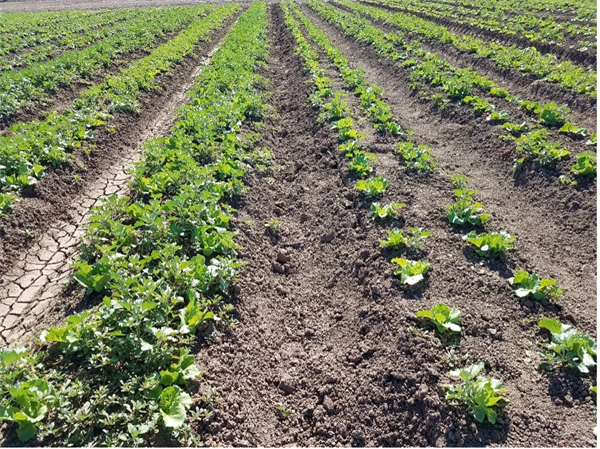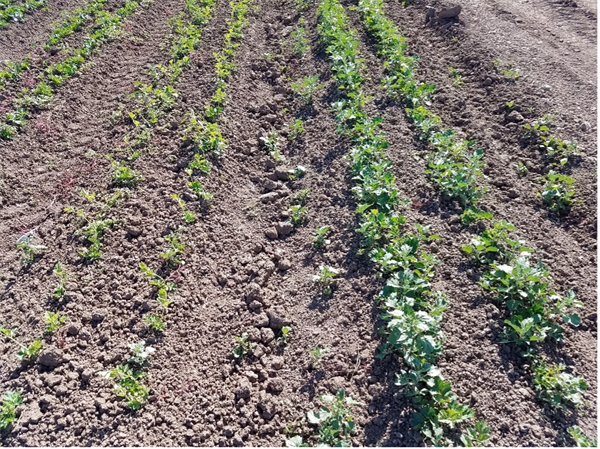At last week’s 2nd AgTech Field Demo: Automated Weeding Technologies, there were some practice fields that had extremely high weed pressure. It was a unique situation and company reps from the three commercial automated in-row companies participating in the Field Day wanted to test their machines to see how they would perform. We were all impressed at how well they worked in the challenging conditions –large weeds, high density (Fig. 1). Some crop plants were mistakenly removed, but not many. They also performed well in celery plots that were similarly heavily infested with weeds (Fig. 2).
It was readily apparent that image-based crop/weed differentiation using artificial intelligence and pattern recognition algorithms has come a long way in the last several years. In the past, when leaves of adjacent plants overlapped or crop plants and weeds were similarly sized, automated weeding machine imaging systems were not able to reliably detect crop plants and weeding performance was poor.
Our studies on automated in-row weeding machine performance (Lati et al., 2016) have confirmed the logical result that labor savings for follow up hand weeding operations are significant in fields where weed pressure is high as compared to where it is low. If you have a heavily infested field, it might be worth investigating the use of an automated in-row weeding machine. I was impressed at how well today’s machines work.
References
Lati, R.N, Siemens, M.C., Rachuy, J.S. & Fennimore, S.A. (2016). Intrarow Weed Removal in Broccoli and Transplanted Lettuce with an Intelligent Cultivator. Weed Technology, 30(3), 655-663.

Fig. 1. Representative image of cultivating performance of three commercial
automated in-row weeding machines (right) operated in heavily weed infested
lettuce (left). Photo taken 5 days after treatment. Machines included Stout AgTech
Smart Cultivator, FarmWise Titan FT-35 and K.U.L.T. Kress iSelect.

Fig. 2. Celery cultivated using an automated in-row weeding machine (left) and a standard cultivator (right).





